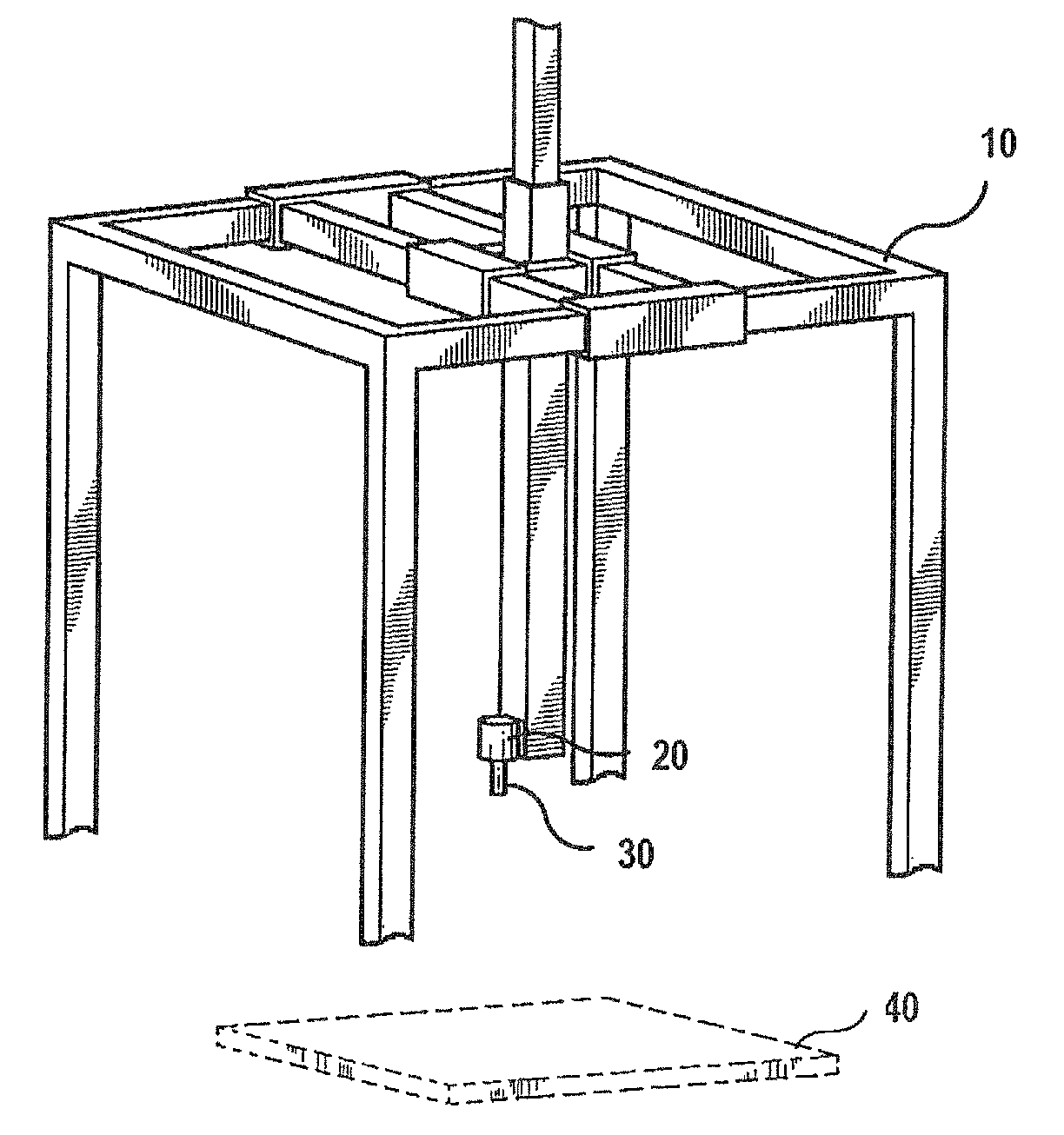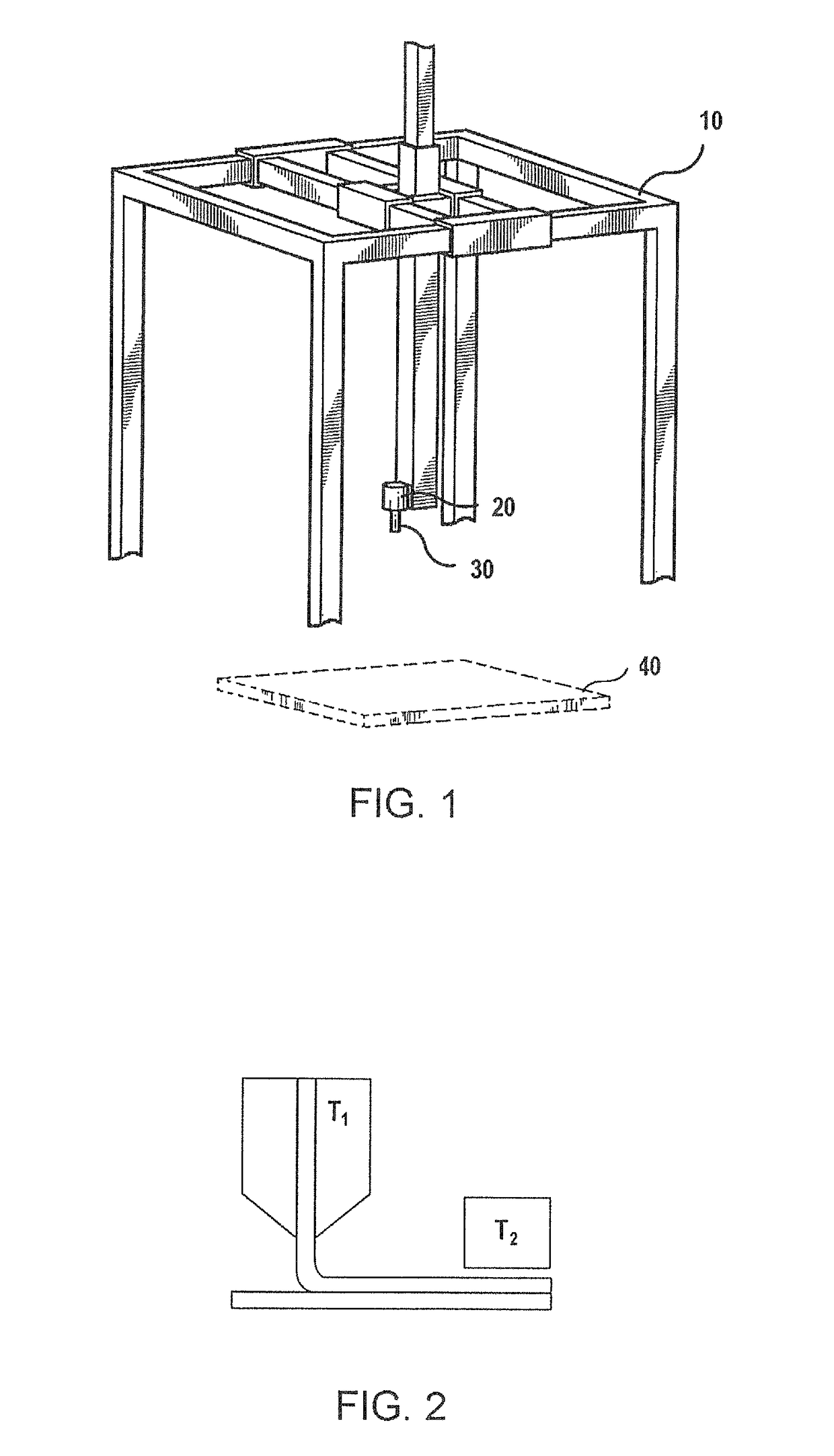Reactive polymer fused deposition manufacturing
a technology of reactive polymers and fused deposition, which is applied in the field of additive or fused deposition manufacturing, can solve the problems of limiting factors for high-strength components, part distortion, and so as to increase the mechanical strength of thermoplastics, increase bonding, and increase the effect of melt viscosity and melting point elevation
- Summary
- Abstract
- Description
- Claims
- Application Information
AI Technical Summary
Benefits of technology
Problems solved by technology
Method used
Image
Examples
Embodiment Construction
[0014]The present invention provides materials and processes for additive manufacturing and / or FDM with cross-linkable polymers. The method and materials of this invention address limitations discussed above with a materials and processing solution using reactive polymers, such as epoxies and polyurethanes. This method and materials of this invention enable rapid out-of-the-box printing with minimal part distortion and enhanced cross-layer bonding.
[0015]FIG. 1 shows a portion of a conventional polymer extrusion system 10, such as that feeds a polymer material into a liquefier to extrude a melted, liquefied polymer material. As shown the polymer extrusion system 10 uses a moveable print head 20 with a nozzle 30, positioned with respect to a work surface (not shown) to create a desired work piece, component, or part 40. The nozzle 30 can be any suitable nozzle, and desirably provides a sufficient throughput of low viscosity material, such as at a low process pressure (e.g., ≦about 100...
PUM
| Property | Measurement | Unit |
|---|---|---|
| temperatures | aaaaa | aaaaa |
| pressure | aaaaa | aaaaa |
| viscosity | aaaaa | aaaaa |
Abstract
Description
Claims
Application Information
 Login to View More
Login to View More - R&D
- Intellectual Property
- Life Sciences
- Materials
- Tech Scout
- Unparalleled Data Quality
- Higher Quality Content
- 60% Fewer Hallucinations
Browse by: Latest US Patents, China's latest patents, Technical Efficacy Thesaurus, Application Domain, Technology Topic, Popular Technical Reports.
© 2025 PatSnap. All rights reserved.Legal|Privacy policy|Modern Slavery Act Transparency Statement|Sitemap|About US| Contact US: help@patsnap.com



